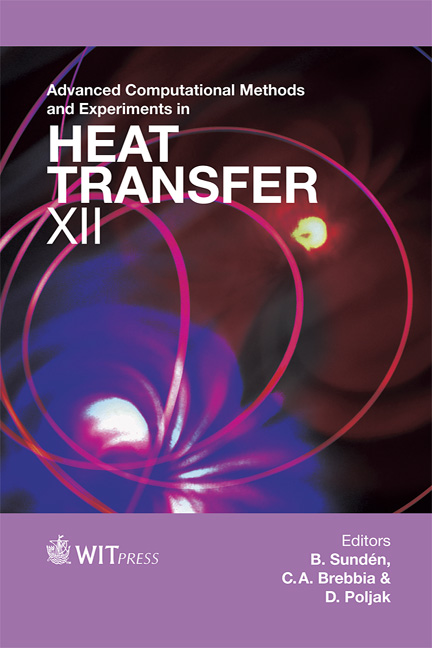Offset Strip Fin Nanocomposite Polymer Heat Exchanger Development
Price
Free (open access)
Transaction
Volume
75
Pages
12
Page Range
47 - 58
Published
2012
Size
1,295 kb
Paper DOI
10.2495/HT120051
Copyright
WIT Press
Author(s)
B. Fassolette, P. Bonnamy & J. A. Gruss
Abstract
This paper describes an analytical and numerical design method for compact heat exchangers using nanocomposite polymer fins. The heat exchanger considered is a plate and fin air/water type. There are OSF fins with longitudinal gaps on the air side and minichannels on the water side. The analytical model is based on several state of the art correlations like the Manglik and Bergles correlation for OSF fins, introducing some corrections due to the gap along the fin. A global analytical design method allowing optimization of the heat exchanger is described. A CFD model of the fins has been developed in order to introduce corrections due to the specific geometry of the polymer fins. Prototypes developed with industrial partners will be tested in our lab to validate this model. Keywords: heat exchange, polymer, nanocomposite, simulation. 1 Introduction For several years, special attention has been focused on alternative materials that can replace metals (Al, stainless steel, Cu, Ti) for the manufacture of heat exchangers (HX). Indeed, metals have become more and more expensive and require a great deal of energy for processing. Polymers have some advantages for use in HX as chemical resistance, antifouling properties, manufacturing cost… but their main drawbacks are their poor thermal conductivity, lower mechanical resistance and limited temperature range. Adding nanofillers may improve the properties of polymers and permit to design efficient and cost effective HX for low to moderate temperature applications. An HX has been designed using this new material for a marine Intercooler heat exchanger dedicated to cool compressed air with seawater. This HX may
Keywords
heat exchange, polymer, nanocomposite, simulation.





